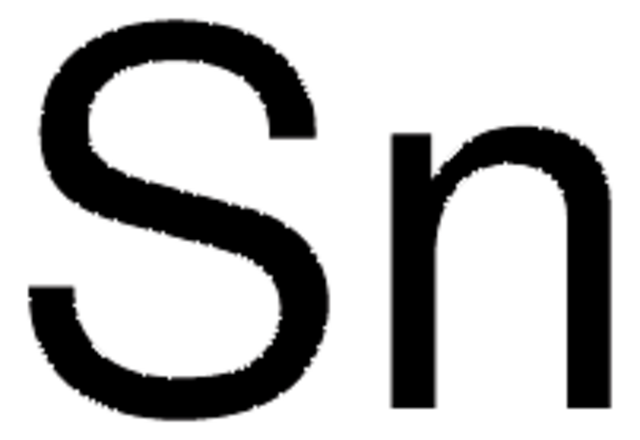204692
Tin
shot, 99.999% trace metals basis
Sinônimo(s):
Tin Powder, Tin element
About This Item
Produtos recomendados
Ensaio
99.999% trace metals basis
forma
shot
resistividade
11 μΩ-cm, 20°C
pb
2270 °C (lit.)
pf
231.9 °C (lit.)
densidade
7.310 g/mL at 25 °C (lit.)
cadeia de caracteres SMILES
[Sn]
InChI
1S/Sn
chave InChI
ATJFFYVFTNAWJD-UHFFFAOYSA-N
Aplicação
Código de classe de armazenamento
13 - Non Combustible Solids
Classe de risco de água (WGK)
WGK 3
Ponto de fulgor (°F)
Not applicable
Ponto de fulgor (°C)
Not applicable
Equipamento de proteção individual
Eyeshields, Gloves, type N95 (US)
Escolha uma das versões mais recentes:
Já possui este produto?
Encontre a documentação dos produtos que você adquiriu recentemente na biblioteca de documentos.
Os clientes também visualizaram
Artigos
Solid state and materials chemistry have made a tremendous impact and have experienced growth in recent years, particularly for rare earthcontaining materials.
The price of tellurium, a key component in many thermoelectric materials, has risen in recent years, leading to the search for more cost-effective substitutes. This article presents silicide materials as a cheaper potential alternative.
In recent years, the price of tellurium, a key component in the bestperforming thermoelectric materials, has increased significantly, leading to the question, “Is it economically viable to produce thermoelectric generators on an industrial scale?
Nossa equipe de cientistas tem experiência em todas as áreas de pesquisa, incluindo Life Sciences, ciência de materiais, síntese química, cromatografia, química analítica e muitas outras.
Entre em contato com a assistência técnica




